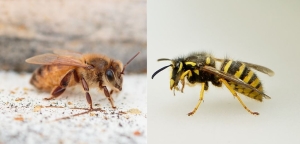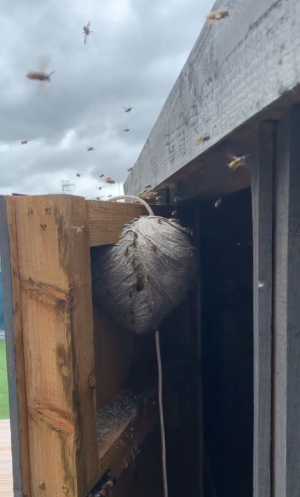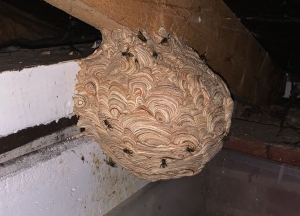For the untrained eye, bees and wasps may just look the same. This is why most people don’t even know how to distinguish between these two stinging insects. However, knowing the difference between wasps and bees can go a long way to help experts in pest control Dublin deal with them properly and effectively.
Wasps and bees are often feared and dreaded for their painful stings, but believe it or not, these insects are separated by an evolution of 130 million years, resulting in major differences in their anatomy, nest structure, and behaviour.
While bees have an important role to play in the life cycle of most plants, wasps don’t pollinate and may even be a nuisance to humans.
The following are the three primary methods you can use to help you distinguish wasps and bees from each other.
Anatomy
Bees, including honeybees and bumblebees, are fuzzy. Wasps, on the other hand, are noticeably smooth. Wasps can also be black and yellow, or completely black. Meanwhile, bees have two colours with stripes on their abdomen.
With yellow jacket wasps as the only exception, most wasps are bigger compared to honeybees. Their legs are also longer, and their midsection is also more tapered, connecting the abdomen and the thorax.
The overall aggressive appearance of wasps suits their temperament, and they even have a stinger with multiple uses to back it up.
Behaviour
The honeybees live in big colonies known as hives made up of thousands of members that work together to collect the pollen and nectar required for the production of honey. Once they feel threatened, bees will fight to defend and protect their hives. But without any threats, most honeybees exhibit less aggression compared to wasps.
The stinger of honey bees has a barbed tip that tears out from the insect after it stung, which results in the death of the bee. This is why the stinger of honey bees is only a one-time use weapon that encourages more defensive behaviour instead of offensive.
On the other hand, wasps are more predatory. They don’t spread pollen, collect nectar, or produce honey. These insects mainly survive by feeding on other insects. Some wasps also rely on scavenging. Wasps are also more inclined to show aggression, with straight-tipped stingers that can easily deliver multiple painful stings that won’t injure the insect, unlike in the case of bees.
Hives and Nests
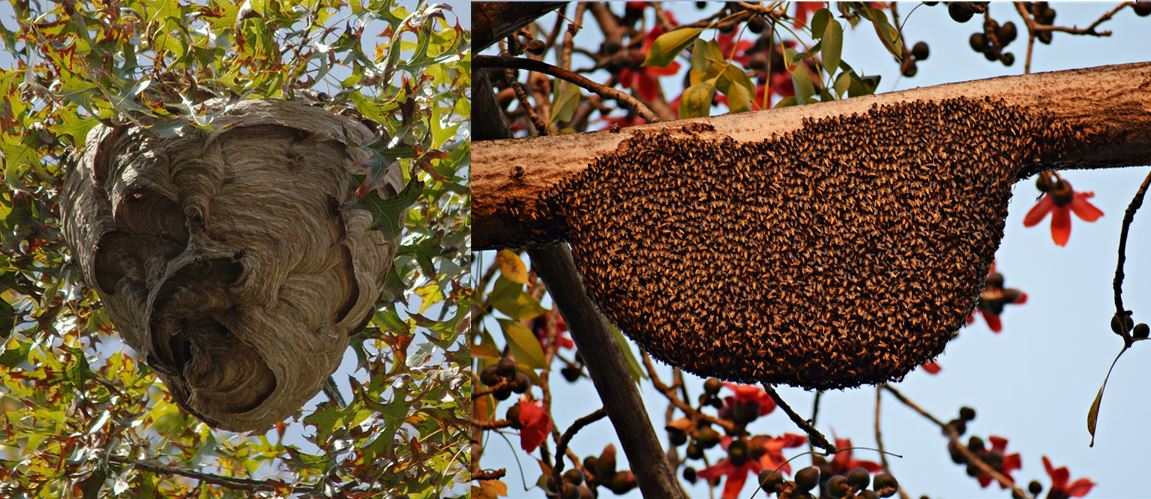
You can easily distinguish wasps from bees by looking at the location, building material, and shape of their hives and nests. Honey bees and their fuzzier and fatter cousins, the bumble bees, often live in hives made from a waxy substance. You can spot a honeycomb cell pattern attached to trees, in attics, and exposed in bushes, especially if they cannot find better locations. However, beehives shouldn’t look papery.
The nests of wasps are made of a papery substance with an umbrella-like shape with open cells on the lower part. They may also have a bulbous shape and be smooth with paper walls. You can often find wasp nests in roofs, eves, corners, and other structures. These papery nests can hold several hundred of these insects.
Yellow jacket wasps may also seek refuge in your attic. Some even build their nests in the ground, holding thousands of these stinging predators. It is also important to note that wasp nests don’t contain wax or honey.
Benefits of Bees and Wasps to the Ecosystem
Even though most people are aware of the benefits of bees to the ecosystem, many may not be familiar with the fact that wasps also have their role in the environment. This is despite being infamously known as an aggressive nuisance.
As you might already know, bees are amazing pollinators. With the help of the hairy short legs, bees can collect and transport more than 80% of the pollen that most vegetable-seed plants, fruits, and legumes need to reproduce.
If all the bees on the planet were extinct, there would be a drastic change in the human diet because most of the available foods would diminish or even disappear without the help of bee pollination. In particular, coffee would become rare and expensive because the coffee flower only opens for pollination during a window period of a few days per year.
The next time you feel tempted to stomp on the bee that lands on the cup of your morning coffee you are enjoying outside on your porch, you might want to think twice and consider the benefits that bee pollen has to offer.
While wasps may not be excellent as pollinators like honeybees, they still serve their purpose. Wasps act more as natural pest control. These predators feed their young with other insects. Preying mainly on flies, crickets, and caterpillars, just to mention a few, the hostile wasps can help in controlling the population of different insects that can kill valuable crops.
Seeing a yellow jacket might make you want to destroy it right away, especially if it startled you with its intimidating appearance. However, as long as their nest is located at a safe distance away from your home, your best course of action, in this case, is to just leave the wasp alone.
While bees and wasps are two insects that you wouldn’t want to nest near or inside your home, proper identification of the insect can help you determine a suitable plan of action to deal with them accordingly.
Physical appearance, behaviour, and nesting habits are the three major things you should watch out for to know which of these two pests is causing you trouble.
But if you fear or suspect that you might already be facing a serious bee or wasp infestation around or in your home, you should make the move before it gets worse. The good news is that all it takes is a phone call to the experts on pest control Dublin and you can finally free yourself from the worries of knowing that some bees or wasps may bring harm to you and your family.
Don't hesitate to contact The Wasp Specialist in Dublin for your wasp nest removal needs.Call The Wasp Specialist in Dublin: (01) 452 3680
Email Us: This email address is being protected from spambots. You need JavaScript enabled to view it.
or fill out the Online Form
If you have noticed a wasp nest in your shed, it is essential to take action before the infestation becomes a bigger problem. Wasps are aggressive and can be dangerous, especially if you have an allergy to their stings. In this blog, we will discuss the risks associated with a wasp nest in a shed and recommend using a professional service to ensure the safe removal of the nest.
Risks Associated with a Wasp Nest in Sheds
A wasp nest in a shed can pose various risks to you and your property. Here are some of the most common risks associated with a wasp nest in shed:
-
Wasp stings: Wasps are aggressive when they feel threatened, and their stings can be extremely painful, especially if you have an allergy. Wasps can sting multiple times, which can lead to severe health complications, including anaphylaxis.
-
Structural damage: Wasps can chew through wood, cardboard, and other materials to build their nests. Over time, this can cause significant structural damage to your shed, which can be costly to repair.
-
Infestation: A single wasp nest in your shed can quickly turn into a full-blown infestation if left untreated. The more wasps you have in your shed, the higher the risk of being stung.
-
Property damage: Wasps can cause damage to your property, including chewing through electrical wires and other materials.
-
Health risks: Wasps can carry harmful bacteria, including E. coli and Salmonella, which can cause serious health problems if they come into contact with food or other surfaces in your shed.
Another risk associated with wasp nests in sheds is that they can attract other pests such as rodents and birds. These pests are attracted to the sweet nectar produced by the wasps and will often try to steal it from the nest. This can lead to further damage to your shed and increase the risk of infestations.
How to Identify a Wasp Nest in your Shed
Identifying a wasp nest in your shed is the first step to taking action to remove it safely. Here are some signs that you may have a wasp nest in your shed:
-
Increased wasp activity: If you notice an increase in wasp activity in or around your shed, there is a good chance that you have a nest nearby.
-
Visible nest: Wasps build their nests out of a papery material that resembles gray or brown cardboard. If you can see a visible nest in your shed, it is essential to take action immediately.
-
Presence of wasps: If you notice a high number of wasps flying around your shed, it is likely that there is a nest nearby.
-
Chewed wood or cardboard: If you notice that wood or cardboard in your shed has been chewed, it could be a sign that wasps are building a nest.
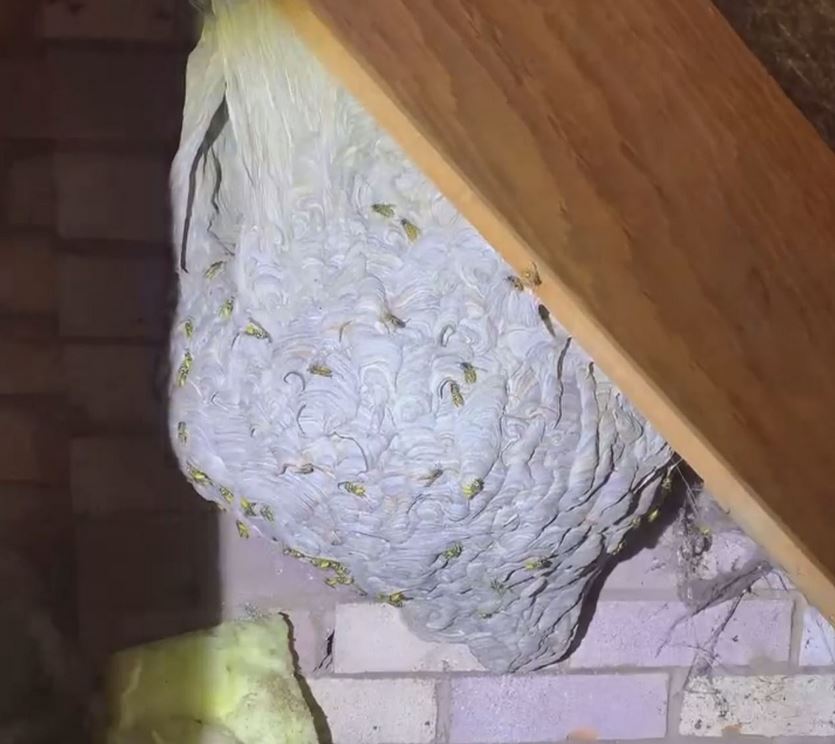
How to Remove a Wasp Nest in Shed
Removing a wasp nest in a shed is not a task that should be taken lightly. It is essential to take the proper precautions to ensure your safety and the safety of others in the area. Here are some tips for removing a wasp nest in your shed:
-
Wear protective clothing: Before attempting to remove a wasp nest, it is essential to wear protective clothing, including long sleeves, pants, and gloves. It is also recommended to wear a hat with a veil to protect your face.
-
Use a wasp spray: You can purchase a wasp spray from your local hardware store to remove the nest. Follow the instructions carefully and ensure that you are using the spray in a well-ventilated area.
-
Seal off the area: Once you have removed the nest, it is essential to seal off the area to prevent wasps from returning. Use caulk or another sealant to cover any gaps or holes in your shed.
-
Dispose of the nest: After removing the nest, it is important to dispose of it properly. Seal the nest in a plastic bag and dispose of it in your outdoor trash bin.
How to Prevent Wasp Nests from Forming
There are several ways that homeowners can prevent wasp nests from forming in their sheds:
-
Keep your shed clean and tidy - Wasps are attracted to areas where there is food debris or rubbish lying around.
-
Seal any cracks or gaps - Wasps will use any gaps or cracks as entry points into your shed.
-
Use insect repellent - Insect repellent sprays can help deter wasps from entering your shed.
-
Use decoys - Some homeowners use decoys such as fake wasp nests or fake predators (such as owls) to deter real wasps from nesting in their sheds.
-
Call in an expert - If you have had problems with wasp nests before, it’s best to call in an expert pest control service such as “The Wasp Specialist in Dublin” for advice on how best to prevent future infestations.
Why You Should Use a Professional Wasp Nest Removal Service
Removing a wasp nest in your shed can be dangerous and should be left to the professionals. Here are some reasons why you should consider using a professional wasp nest removal service:
-
Safety: Professional wasp nest removal services have the proper training and equipment to safely remove the nest without risking injury to you or others.
-
Efficiency: Professional wasp nest removal services can remove the nest quickly and efficiently, minimizing the risk of a more significant infestation.
-
Expertise: Professional wasp nest removal services have the expertise and knowledge to identify the type of wasp and the best method for removal.
-
Guarantee: Reputable professional wasp nest removal services offer a guarantee on their work, giving you peace of mind that the nest will be removed safely and effectively.
If you have a wasp nest in a shed, this can pose various risks to you and your property. Identifying the signs of a wasp nest in your shed and taking action to remove it is essential to prevent a more significant infestation. While you can attempt to remove the nest yourself, it is recommended to use a professional wasp nest removal service for your safety and efficiency.
Don't hesitate to contact The Wasp Specialist in Dublin for your wasp nest removal needs.
Call The Wasp Specialist in Dublin: (01) 452 3680
Email Us: This email address is being protected from spambots. You need JavaScript enabled to view it.
or fill out the Online Form
The Risks with Wasps
Wasps are a common sight in the Irish capital of Dublin, and while they may be beautiful to look at, they can pose a serious risk to both people and property. Wasps can be an especially dangerous pest to contend with in Dublin due to the city's large population and the number of public spaces that are visited by people. Wasps can be hazardous to health and can cause considerable damage to property if not managed properly. In this blog, we will discuss the risks associated with wasps in Dublin and how to address them safely and effectively.
What Are Wasps?
Wasps are insects in the order Hymenoptera, which also includes bees and ants. Wasps are typically identified by their bright yellow and black stripes and their long, slender bodies. Wasps are social insects and live in colonies that can contain thousands of individuals. They feed on a variety of foods, including sugary solutions, which can make them unwelcome visitors to picnics and barbecues. Wasps can also be aggressive and will sting if threatened, so it is important to be aware of their presence.
Risks of Wasps in Dublin
The presence of wasps in Dublin can have a number of risks associated with it. Firstly, wasps can pose a direct health risk to humans. Wasps can be aggressive and will sting if they feel threatened, which can lead to painful and sometimes dangerous reactions. For people who are particularly sensitive to wasp stings, the consequences can be much more serious.
Wasps also pose a risk to property in Dublin. Wasps can build nests in a variety of places including eaves, sheds, and garages. These nests can become large and cause damage to the structure of buildings. If a nest is disturbed, wasps may become agitated and attack, which can be dangerous.
In addition to health and property risks, wasps can also be a nuisance in Dublin. Wasps are attracted to sweet and sugary foods, which can make them unwelcome guests at outdoor events. They can also create a nuisance by buzzing around people, which can be distracting and irritating.
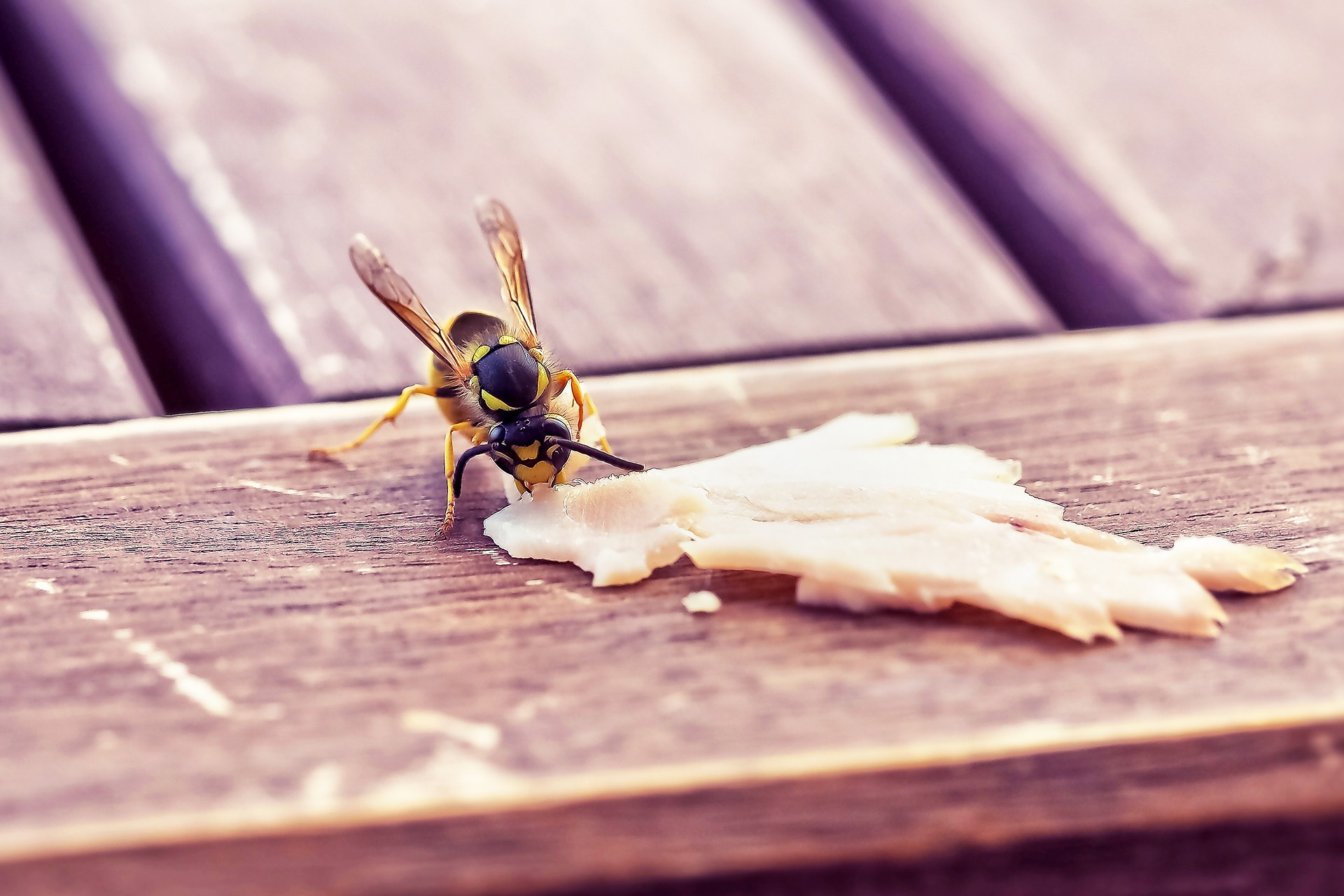
How to Deal With Wasps in Dublin
If you have a wasp problem in Dublin, it is important to take action and deal with it in a safe and effective manner. The best option is to contact a professional pest control company, as they will have the expertise and equipment to safely and effectively remove the wasps. Pest control companies will also be able to advise on preventative measures to ensure that the wasps don't return.
If you're dealing with a wasp problem yourself, it is important to take the necessary precautions. Wasps can be aggressive if disturbed, so it is important to wear protective clothing, such as long-sleeved shirts and trousers, and to avoid swatting or hitting the wasps. It is also important to avoid spraying wasps with insecticides or pesticides, as this can make them more aggressive.
Conclusion
Wasps can be a serious problem in Dublin, and it is important to be aware of the risks associated with them. If you have a wasp problem in Dublin, it is best to contact a professional pest control company, as they will have the expertise and equipment to safely and effectively deal with the wasps. It is also important to take the necessary precautions when dealing with wasps, such as wearing protective clothing and avoiding swatting or hitting them.
Call The Wasp Specialist in Dublin: (01) 452 3680
Email Us: This email address is being protected from spambots. You need JavaScript enabled to view it.
or fill out the Online Form

